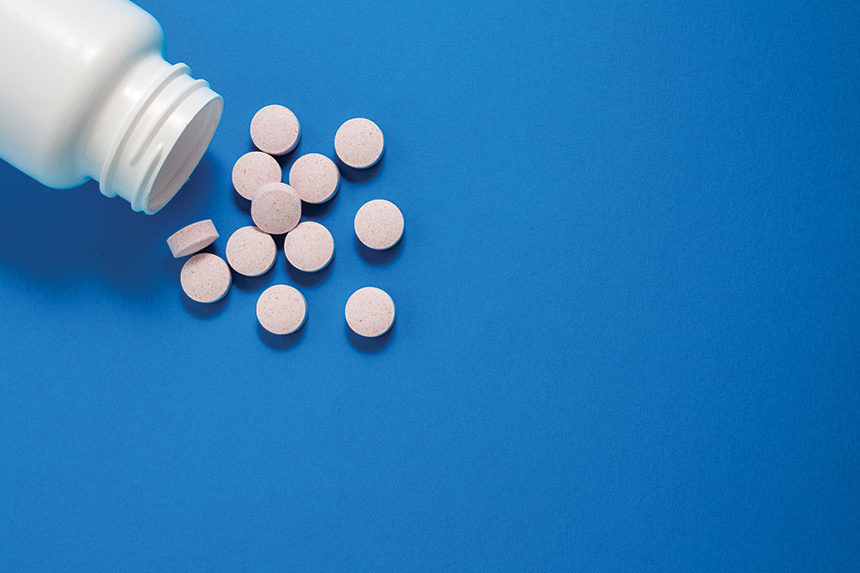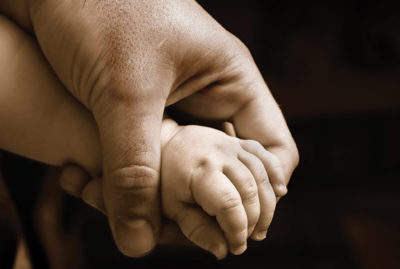During the summer of 2017, my dear friend Colin Hickey needed to undergo surgery. He had managed to tear the labrum of each hip (a cartilage ring around the hip socket), due to a combination of his active lifestyle of hiking, playing tennis, and dancing, plus a structural deformity. The surgeon needed to fix both sides, so he would operate on one side first and then do the other a couple of months later.
This sort of surgery is difficult to describe in terms of its “seriousness.” On the one hand, it’s minimally invasive. The surgeon is able to do the work with only very small incisions, so the outward appearance is of a fairly minor surgery. Once inside, however, he would have to repair the torn cartilage and carve down some excess bone to prevent the sort of friction that caused the tear in the first place. This explains why people who undergo this surgery have months of physical therapy and recovery, after weeks of extremely limited mobility.
After his first surgery, I visited Colin at his apartment, and since I had undergone multiple surgeries two years earlier after a motorcycle accident, we swapped “war stories.” He was in pretty rough shape, able to move only very little, and was confined to his bed for most of the day. He looked pained but also completely alert. I asked him about his pain and meds.
“Yeah, they gave me a bottle of pills, but I don’t want ’em,” he replied. He knew of my struggle with painkillers — when I went through months of excruciating suffering caused by opioid dependence — and he looked at me sympathetically. “Obviously I know the risks; but I also just don’t think I need them. It hurts, and it’ll hurt for a while. But the first days were the worst, and I made it through. So I don’t think they’re necessary.”
As usual with Colin, who is one of the most focused, thoughtful, straight-up toughest people I know, I was impressed. “So you didn’t take any of the pills? At all?”
“Not a one,” he replied.
Colin has always been something of an ascetic. He doesn’t need stuff, and he isn’t a huge fan of medicine. And while he would have, I think, taken the pills if he really thought he needed them, he just wasn’t afraid of some pain, and he was willing to be uncomfortable and work hard.
I’ve always admired him for his dedication to a philosophically rigorous life, but I admired him even more after that day. There wouldn’t have been anything wrong with his taking the pills, but he didn’t need them. And instead of using them anyway, to drive his pain down from manageable to zero, he just stuck it out. When he went in for the second surgery some weeks later, he told his surgeon that he hadn’t used any of the pills, so he didn’t need a new prescription.
And he was right. When the summer was over, and both hips had been fixed, he was pushing his way through physical therapy and still had an untouched bottle of 60 Percocet.
Nothing about my admiration for Colin should indicate that I think all torn labrum surgeries should be performed without prescribing opioids for recovery. If you have had that surgery and you took some of the pills, I get it; I probably would have too. What I love about Colin’s story, rather, is that it highlights the degree to which some pain can simply be dealt with. Not all of it needs to be, but some of it can be.
“Yeah, they gave me a bottle of pills, but I don’t want ’em,” he replied.
Life hurts — quite a lot for some of us — but not all of those pains require pharmacological intervention. And importantly, our expectations can really affect how reasonable that suggestion seems. Part of why Colin was able to make it through that summer, I think, is because he doesn’t expect life to be pain-free, and he’s willing to put up with quite a lot. Perhaps more than should be expected of any of us. But it’s important to reflect on what we can do in order to think carefully about what we should do.
After my accident in 2015, trauma caught me by surprise, and when I found myself in hospitals for weeks, on morphine and fentanyl drips, popping oxycodone, I hadn’t prepared myself at all. It was all new and terrifying. I had one goal: avoid the pain. And only in retrospect can I realize that I carried that goal much too far forward into my recovery.
I wish someone had prepared me for the pain — told me that I would hurt and that it would be scary, but that I didn’t have to let elimination of pain become my sole priority. In short, I wish I had been mentally ready to balance the need for pain relief against the risks and costs of medication. This leads me to think that one of our major goals for rethinking how we deal with pain is not a goal for physicians; it’s a goal for the rest of us.
In many places around the world, but especially in America, we live in a “pill for every pain” culture. You have a headache? There’s a pill for that. Sprained your ankle? Pill for that. Ongoing back pain? Yup, you guessed it. Our over-the-counter medications already capitalize on this culture, selling us acetaminophen, ibuprofen, and aspirin by the buckets. It’s no surprise, then, that prescription pharmaceutical companies jumped on board as well. The basic strategy behind Purdue’s marketing campaign in the 1990s and early 2000s was that OxyContin was effective (stronger than morphine, and lasts 12 hours!) and safe (less than 1 percent of patients develop an addiction!). So why restrict its use to cancer or palliative care? OxyContin is the pill for moderate to severe pain — the pill, that is, for nearly every pain.
The unfortunate fact, however, is that medications have side effects. The effects of opioids can be particularly devastating, but that certainly doesn’t make it the case that all other painkillers are perfectly safe. Acetaminophen must be carefully limited in dosing to avoid causing liver damage, NSAIDs like ibuprofen and celecoxib raise one’s risk of heart attack and stroke.
This consideration of trade-offs is especially difficult for treating chronic pain. As we now know, opioids should not be considered first-line treatment for chronic pain, as they are risky and may well be no more effective than non-opioid therapies. However, most physicians will also warn patients that a lifetime of any pain medication can be dangerous, given the side effects listed above. Determining how to proceed is truly difficult. Sometimes there are alternative interventions that can be considered, such as injections, nerve blocks, or surgery. And sometimes it is completely unclear what will be best for a particular patient.
Not all treatments for pain involve a pill (or some other medical procedure). A truly surprising amount of scientific data supports what we might think of as “lifestyle” therapies, or as some people call it: self-care.
There are many such strategies, supported by varying degrees of scientific evidence, and more research is being conducted all the time. Looking at just some of the most common suggestions: Exercise, yoga, and massage have all been shown to be beneficial for dealing with pain. And really, this shouldn’t be all that surprising. After all, doing these things amounts to taking care of one’s body, which can strengthen and heal weak and damaged tissue.
I wish someone had prepared for the pain — told me that I would hurt and that it would be scary, but that I didn’t have to let elimination of pain become my sole priority.
Additionally, cognitive-behavioral therapy (CBT) — a form of psychotherapy that focuses on altering unhelpful cognitive patterns and behavior — has been shown to be effective for treating certain forms of chronic pain. Despite this evidence base, however, many people find such a suggestion offensive: “What? So you think this is all in my head? You think my pain isn’t real?”
That pain can be treated with CBT, however, implies nothing of the sort. Chronic pain is often what’s called “maladaptive pain,” which means it no longer signals tissue damage or injury. Whereas acute pain serves as an alert that one’s body is at risk, that same pain can transition into chronic pain that no longer serves that function.
It’s maladaptive — rather than adaptive — pain that causes suffering but which plays no productive health role. The evidence that CBT can successfully treat chronic pain suggests that therapy can help the brain and nervous system to correct this dysfunction. By pursuing psychological health, one can simultaneously promote pain relief.
Acupuncture has also been shown to be effective in treating chronic pain. And research is being conducted into all sorts of lifestyle interventions, ranging from mindfulness meditation to qigong and tai chi. In short, the evidence is mounting that changing one’s lifestyle can constitute genuine pain therapy. None of them is a magic bullet (sadly, we don’t have one of those), but they are genuine treatments.
Look, it’s certainly not the case that self-care is magic and will replace our need for powerful opioid medications. Some pain is devastating and life-limiting, and sometimes that pain responds well to opioids. I am most certainly not recommending that we all just get up after an injury and “rub some dirt in it.” That’s not the answer, and not my suggestion.
But we can be part of an important culture change. We can stop demanding from our doctors a pill for every pain, and we can try to take seriously the nonpharmacological treatments they suggest. We can ask whether 60 pills is really necessary, or whether just a few might do.
In short, each one of us can make a difference. Not by trying to eliminate opioids from pain medicine but by formulating an attitude and a set of expectations that help our doctors use those powerful tools responsibly.
We all need to foster a different relationship with pain and develop a different understanding of medicine — what it does and doesn’t owe us, and what we should expect from our doctors. We also need to understand addiction and expand our circle of empathy, demanding that our elected officials do the same.
Medicine can be improved and public health interventions can be introduced, but they won’t be unless we demand them.
From In Pain: A Bioethicist’s Personal Struggle with Opioids by Travis Rieder. Copyright © 2019 by Travis Rieder. Reprinted by permission of Harper, an imprint of HarperCollins Publishers
Featured image: Shutterstock
Become a Saturday Evening Post member and enjoy unlimited access. Subscribe now




